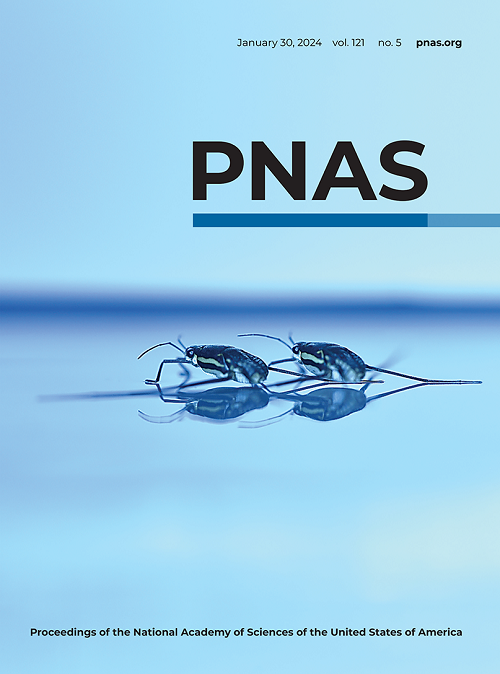电气化乙炔半加氢法可持续合成聚合物级乙烯。
IF 9.4
1区 综合性期刊
Q1 MULTIDISCIPLINARY SCIENCES
Proceedings of the National Academy of Sciences of the United States of America
Pub Date : 2025-07-09
DOI:10.1073/pnas.2505151122
引用次数: 0
摘要
乙炔(C2H2)的电催化半加氢,由可再生电力供电,为净化粗乙烯(C2H4)流提供了一种替代传统热催化方法的能源和成本效益。这种方法通过减少温室气体排放,为聚合物级C2H4提供了一条更可持续的途径,但由于高性能催化剂的稀缺以及缺乏大规模实施的综合技术经济分析,其商业潜力仍然受到限制。在这项研究中,我们对单分散金属纳米颗粒(Cu, Ag, Au, Pd, Bi)催化剂进行了广泛的筛选和评估,这些催化剂具有可调的粒径和形貌,用于流动反应器中C2H2的电催化半加氢。在这些候选材料中,45 nm的Cu纳米立方和8 nm的Ag纳米立方表现出最高的性能。在模拟粗乙烯流(C2H2: C2H4 = 1:80)中,Cu纳米立方在室温下对C2H2的去除率达到99.7%,对C2H4的选择性为86.7%,并保持了120 h的稳定性。同时,8 nm Ag纳米立方在相同条件下具有98.9%的高选择性,转化率为96.7%,并保持了24 h的稳定性。详细的技术经济分析证实了电催化系统用于工业规模粗乙烯处理的可行性,其最佳转化成本为每公斤C2H2 0.74美元,而优化后的热催化系统为每公斤1.34美元。此外,我们的生命周期评估强调了电催化途径的环境效益,碳排放量减少了50%以上。我们在C2H4原油流中实现了高效的C2H2半加氢,最大限度地减少了对环境的影响,优化了资源利用,为更可持续的未来做出了贡献。本文章由计算机程序翻译,如有差异,请以英文原文为准。
Sustainable synthesis of polymer-grade ethylene via electrified acetylene semihydrogenation.
The electrocatalytic semihydrogenation of acetylene (C2H2), powered by renewable electricity, provides an energy- and cost-efficient alternative to conventional thermocatalytic methods for purifying crude ethylene (C2H4) streams. This approach provides a more sustainable route to polymer-grade C2H4 by reducing greenhouse gas emissions, yet its commercial potential remains limited by the scarcity of high-performance catalysts and the absence of comprehensive techno-economic analyses for large-scale implementation. In this study, we conduct an extensive screening and evaluation of monodisperse metal nanoparticle (NP) catalysts (Cu, Ag, Au, Pd, Bi) with tunable particle sizes and morphologies for the electrocatalytic semihydrogenation of C2H2 in flow reactors. Among these candidates, 45 nm Cu nanocubes and 8 nm Ag NPs exhibited the highest performance. In a simulated crude ethylene stream (C2H2: C2H4 = 1:80), Cu nanocubes achieved 99.7% C2H2 removal at room temperature with a specific selectivity of 86.7% for C2H4 and maintained stability for 120 h. Meanwhile, 8 nm Ag NPs exhibited a high specific selectivity of 98.9%, with 96.7% conversion and 24-h stability under the same conditions. A detailed techno-economic analysis confirms the feasibility of electrocatalytic systems for industrial-scale crude ethylene treatment, with an optimal conversion cost of $0.74 per kg of C2H2, compared to $1.34 per kg for the optimized thermocatalytic system. Furthermore, our life cycle assessment highlights the environmental benefits of the electrocatalytic pathway with a carbon emission reduction of over 50%. Our electrified, efficient C2H2 semihydrogenation in C2H4 crude streams minimizes environmental impact and optimizes resource use, contributing to a more sustainable future.
求助全文
通过发布文献求助,成功后即可免费获取论文全文。
去求助
来源期刊
CiteScore
19.00
自引率
0.90%
发文量
3575
审稿时长
2.5 months
期刊介绍:
The Proceedings of the National Academy of Sciences (PNAS), a peer-reviewed journal of the National Academy of Sciences (NAS), serves as an authoritative source for high-impact, original research across the biological, physical, and social sciences. With a global scope, the journal welcomes submissions from researchers worldwide, making it an inclusive platform for advancing scientific knowledge.

 求助内容:
求助内容: 应助结果提醒方式:
应助结果提醒方式:


